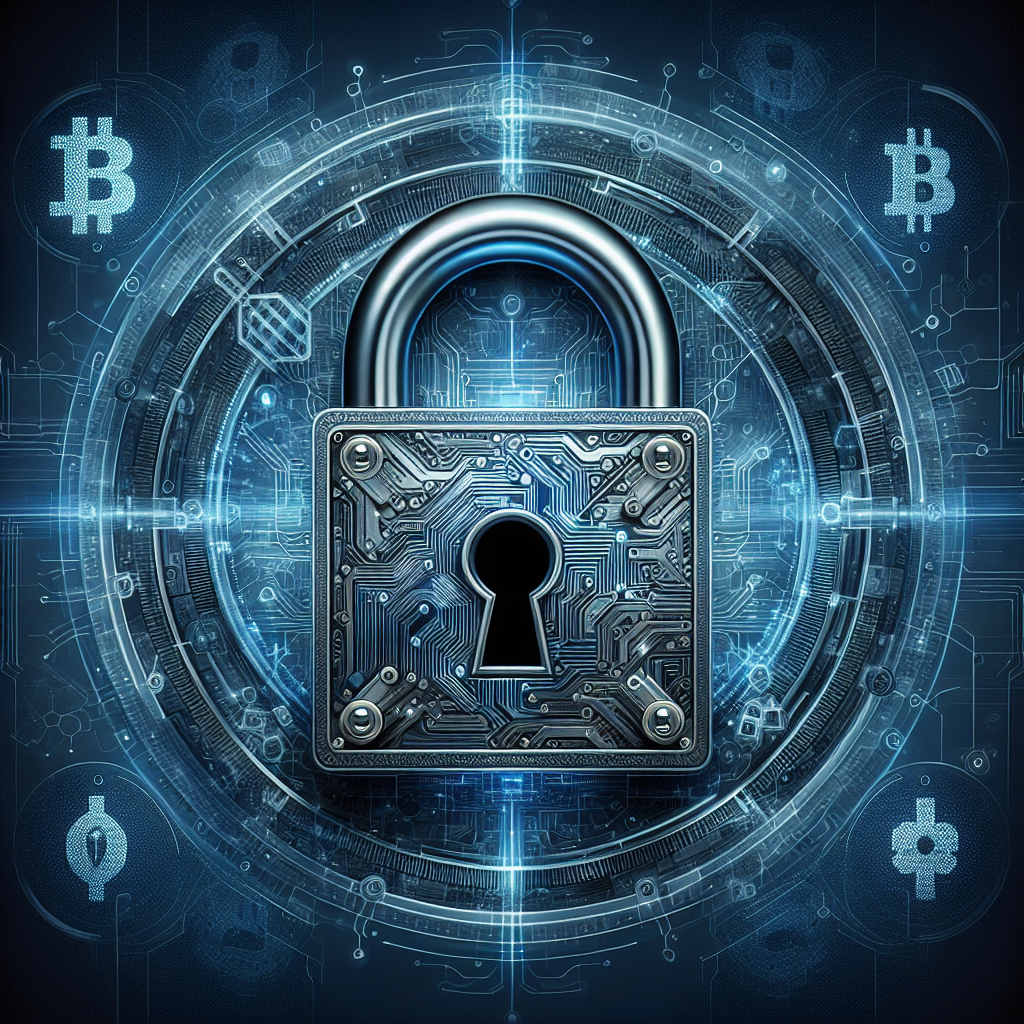Imagine this scenario: You wake up one morning and check your cryptocurrency account, only to discover that all your precious assets have been mysteriously stolen. Panic sets in as you realize that your hard-earned money has vanished into thin air. How could this happen? Well, the truth is, without proper security measures, your digital funds are at risk of being compromised. That’s where two-factor authentication comes in. In this article, we will explore how implementing this simple yet powerful security feature can safeguard your crypto assets from potential theft and provide you with peace of mind.
Why is Two-Factor Authentication Important for Crypto Assets?
In today’s digital age, where cyber threats and hacking incidents are on the rise, it has become crucial to implement robust security measures to protect our valuable assets, especially when it comes to cryptocurrencies. Two-factor authentication (2FA) is an essential tool that adds an extra layer of security to our crypto assets, reducing the risk of unauthorized access and potential theft. This article will explore the importance of 2FA for crypto assets, its definition and purpose, different types of 2FA, how to implement it, its benefits, common mistakes to avoid, alternative security measures, challenges and limitations, best practices, and the future of 2FA in the crypto space.
Increasing Incidences of Hacking and Theft
With the growing popularity and value of cryptocurrencies, there has been a significant increase in hacking incidents and thefts targeting individuals and exchanges. Hackers employ various techniques such as phishing attacks, malware, and brute force attacks to gain unauthorized access to crypto wallets and steal digital assets. These incidents highlight the need for additional layers of security to safeguard crypto assets and protect them from falling into the wrong hands.
Vulnerability of Cryptocurrency Wallets
Cryptocurrency wallets, both hardware and software-based, are the primary storage for crypto assets. However, they can be vulnerable to attacks due to various factors such as weak passwords, lack of regular updates, or even physical theft. By implementing two-factor authentication, users can add an extra layer of protection to their wallets, making it significantly more challenging for hackers to gain unauthorized access.

Risk of Phishing Attacks
Phishing attacks have become increasingly sophisticated and targeted, posing a significant risk to crypto asset holders. In a phishing attack, scammers impersonate legitimate entities or individuals to trick users into revealing their login credentials or sensitive information. Two-factor authentication can provide an effective defense against these attacks by requiring an additional authentication factor, such as a code generated on a mobile device, that scammers cannot easily bypass.
What is Two-Factor Authentication?
Two-factor authentication, also known as 2FA, is a security mechanism that requires users to provide two separate forms of identification or verification before granting access to a system or account. The goal is to add an extra layer of security beyond the traditional username and password combination. This additional factor can be something you know (e.g., a PIN), something you have (e.g., a mobile device or hardware key), or something you are (e.g., biometric data).
Different Types of Two-Factor Authentication
There are several types of two-factor authentication methods available, each offering varying levels of security and convenience. One common method is SMS-based authentication, where a unique code is sent to the user’s mobile phone via SMS. Another method is time-based one-time passwords (TOTP) generated by a mobile app, such as Google Authenticator or Authy. Hardware tokens, such as USB security keys, and biometric authentication methods, like fingerprint or facial recognition, are also popular choices.

Implementing Two-Factor Authentication for Crypto Assets
When it comes to protecting crypto assets, it is crucial to select a reliable two-factor authentication method and implement it properly. Choosing an authentication method with a proven track record of security and compatibility with your wallet or exchange is essential. Once you have selected a method, you can proceed to set up two-factor authentication for your wallets and exchanges. This typically involves linking your account to the chosen 2FA method and following the setup instructions provided by your wallet or exchange provider.
Benefits of Two-Factor Authentication for Crypto Assets
One of the primary benefits of implementing two-factor authentication for crypto assets is enhanced security and protection. With the additional layer of authentication, even if a hacker manages to obtain your username and password, they would still need the second factor to gain access to your account. This significantly reduces the risk of unauthorized access and potential theft of your crypto assets.
Another crucial advantage of 2FA is the prevention of unauthorized access. By requiring an additional authentication factor, even if someone gains access to your login credentials, they would be unable to log in without the second factor, adding an extra barrier against malicious actors attempting to compromise your account.
Two-factor authentication can also greatly reduce the risks of identity theft. With traditional authentication methods, such as usernames and passwords, if a hacker gains access to your account, they can easily impersonate you and carry out malicious activities. However, with 2FA, it becomes much more challenging for an attacker to impersonate you, as they would need both your login credentials and the second authentication factor.
Common Mistakes to Avoid with Two-Factor Authentication
While implementing two-factor authentication is a crucial step in securing your crypto assets, there are some common mistakes to avoid to ensure its effectiveness. One common mistake is using weak or repeated authentication methods. It is essential to choose a strong, unique password for your accounts and avoid using the same authentication method across multiple platforms, as this increases the risk of a data breach compromising your entire digital presence.
Another mistake to avoid is failing to update your two-factor authentication settings regularly. It is important to periodically review and update your authentication methods, especially if you no longer use a particular method or if a newer, more secure method becomes available. Failure to update could leave you vulnerable to potential attacks exploiting outdated authentication methods.
Alternative Security Measures to Consider
Although two-factor authentication provides an additional layer of security for your crypto assets, there are alternative security measures worth considering. One such measure is hardware security keys. These physical devices store authentication information securely and provide a highly secure method of authentication that is resistant to phishing attacks and other forms of online threats.
Another alternative is biometric authentication, which uses unique physical or behavioral characteristics, such as fingerprints or facial recognition, to verify your identity. Biometric authentication offers convenience and security, as these traits are difficult to replicate or steal. However, it is important to note that biometric data can be compromised in rare instances, so it is recommended to combine biometrics with other factors for enhanced security.
Challenges and Limitations of Two-Factor Authentication
While two-factor authentication is generally effective in bolstering security, there are some challenges and limitations to be aware of. One potential challenge is the risk of social engineering attacks. Even with 2FA in place, scammers can still attempt to trick users into revealing their authentication factors through tactics such as impersonation or manipulation. Therefore, it is important to remain vigilant and verify the legitimacy of any requests for your authentication factors.
Another limitation is the reliance on external factors for authentication. If you primarily rely on SMS-based authentication, for example, you may face challenges if you lose your mobile phone or if you are in an area with poor network coverage. It is crucial to have backup methods in place, such as using an authenticator app or hardware token, to mitigate the risks and ensure continuous access to your crypto assets.
Best Practices for Two-Factor Authentication with Crypto Assets
To maximize the effectiveness of two-factor authentication for your crypto assets, it is important to follow some best practices. Enabling multi-factor authentication whenever possible is highly recommended. Utilizing multiple authentication factors, such as combining a hardware key with a biometric factor, provides an extra layer of security and makes it significantly more challenging for attackers to bypass your defenses.
Periodic review and maintenance of your authentication methods are also crucial. Take the time to regularly assess the security and compatibility of your chosen 2FA methods and update them accordingly. By keeping up with the latest security practices and technology, you can ensure that your crypto assets remain protected against emerging threats.
Additionally, it is important to keep backup options in mind. In the event of a lost or damaged authentication device, it is helpful to have alternative methods readily available to regain access to your accounts. Storing backup codes or having a spare hardware token can be crucial for maintaining access to your crypto assets, even in unexpected situations.
The Future of Two-Factor Authentication and Crypto Assets
As technology continues to evolve, the future of two-factor authentication in the crypto space holds great promise. Emerging technologies and innovations aim to further enhance security and usability. For example, advancements in biometric authentication may offer more seamless and secure methods of verification, while the integration of decentralized finance (DeFi) platforms could provide additional layers of security through smart contract-based authentication.
Conclusion
In conclusion, two-factor authentication plays a vital role in protecting your crypto assets from the growing threats of hacking, theft, and phishing attacks. By implementing 2FA, you add an extra layer of security and significantly reduce the risks associated with unauthorized access and identity theft. It is important to choose a reliable authentication method, set up two-factor authentication properly, and regularly review and update your security measures. While two-factor authentication is an effective security measure, it is also important to consider alternative methods and be aware of the challenges and limitations. By following the best practices outlined in this article, you can ensure the safety and security of your crypto assets now and in the future.

